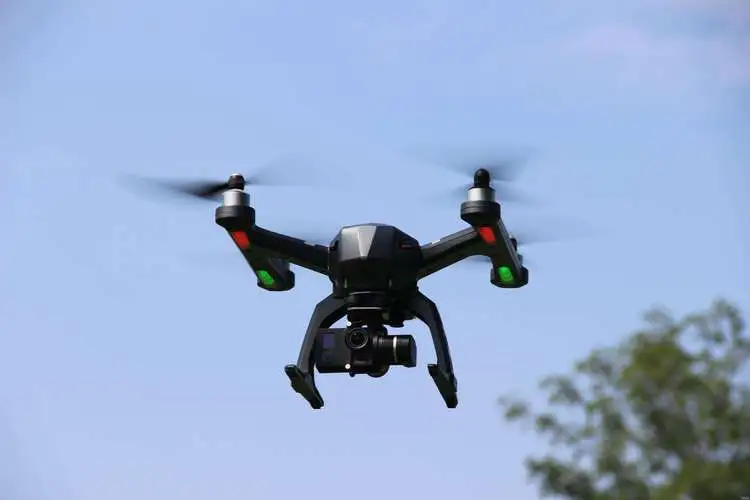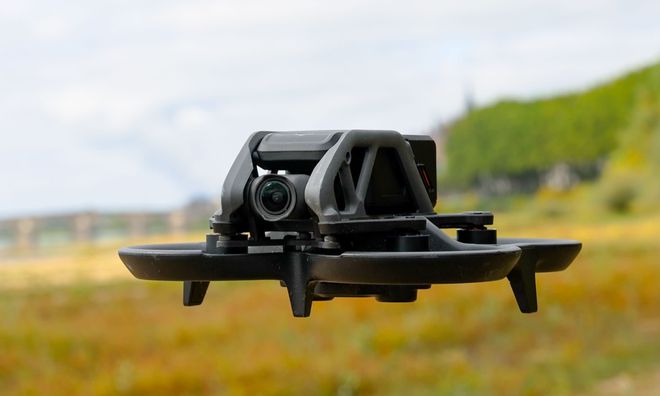
In recent years, China's drone industry has emerged as a rising star in the international market and has become a global focus of attention. From its initial germination to its current flourishing development, Chinese drones have not only achieved significant achievements in technology and market, but also demonstrated enormous potential and broad prospects in military and civilian fields.
Start from the bud, accumulate and develop gradually
The development of unmanned aerial vehicles in China can be traced back to the late 1950s. In 1958, China's first unmanned aerial vehicle was born, marking a difficult first step in the country's unmanned aerial vehicle industry. In the following decades, China's drone technology continued to explore and made a series of breakthroughs. In 1966, the "Changkong No.1" high-speed unmanned aerial vehicle successfully made its maiden flight, which was of great significance. It marked a further improvement in China's technological strength in the field of unmanned aerial vehicles and laid a solid foundation for future development. In the same year, the high-altitude reconnaissance drone developed by Beijing Institute of Aeronautics and Astronautics went through 7 test flights and also achieved success. In an era where technological resources were relatively scarce, each success was the result of countless efforts and wisdom of researchers. In 1975, the "Changhong-1" unmanned aerial vehicle successfully flew, with a height of 18000 meters, a speed of 800 kilometers per hour, and a range of 2380 kilometers. Such performance parameters were at a relatively advanced level at that time, demonstrating the continuous progress of China's unmanned aerial vehicle technology research and development.
In the early days, Chinese drones were mainly used in the military field to meet the needs of national defense and security. But with the accumulation of technology and changes in the international situation, China's drone industry has begun to seek broader development space and gradually expand into the civilian field. Entering the 21st century, with the rapid development of related fields such as information technology and materials science, China's unmanned aerial vehicles have ushered in a golden period of development. Especially with the rise of outstanding enterprises such as DJI Innovation, the widespread application of drones in civilian fields such as aerial photography and agricultural crop protection has been greatly promoted, gradually bringing drones from military use to the public eye and opening a new chapter in the diversified development of China's drone industry.
Technological breakthrough, civilian navigation
In the field of civilian drones, China has been the world's largest exporter of civilian drones for many years, accounting for over 70% of global patent applications in the field of drones and becoming the world's largest source of technology. According to data from the CCID Consulting Intelligent Equipment Industry Research Center, the export value of China's civilian drones will be around 1.8 billion US dollars in 2022 and 2023. From January to October 2024, the total export value will reach 1.736 billion US dollars, and the annual export value is expected to exceed 2 billion US dollars.
Technological innovation is one of the key factors for the success of China's civilian unmanned aerial vehicles. Drones are deeply integrated with new technologies such as artificial intelligence, 5G, and digital twins, and the iteration of aircraft models is becoming faster and faster. Related products include multi rotor, fixed wing drones, unmanned helicopters, ground stations, various types of pods, hangars, and backend information processing platforms, forming a full spectrum of product sequences and solutions. Represented by DJI, Chinese drone companies stand out in the global market with their outstanding performance, innovative material technology, high cost-effectiveness, comprehensive quality assurance system, strict control measures, and wide range of application areas. The export quantity of agricultural drones from DJI in 2024 has increased 32 times compared to 2017, with an annual growth rate of 66%. The sales network covers more than 100 countries and regions around the world.
In practical applications, the presence of Chinese civilian drones is widespread in various fields. In the field of logistics and distribution, Meituan drones have launched regular operations in Dubai, United Arab Emirates, providing local residents with fast food, emergency medicine and other product delivery services. This not only demonstrates the technological strength of Chinese drones, but also provides an example for the innovation of global logistics and distribution models. In the field of agriculture, drones assist in the development of precision agriculture, helping governments and farmers better understand crop growth, monitor pests and diseases, significantly improve agricultural production efficiency, and reduce production costs. For example, in the past, a traditional ground spreader could cost up to $250000, while the Chinese brand DJI drone only costs $35000, which not only reduces fertilizer costs but also minimizes fertilizer waste. In addition, drones are playing an increasingly important role in fields such as geographic surveying, police security, emergency monitoring, communication relay, and meteorological detection, constantly expanding the application boundaries of civilian drones.
Military Rise, International Attention
In the military field, China's military drones have also achieved remarkable achievements. China has developed various specifications, models, and uses of military unmanned reconnaissance aircraft, unmanned helicopters, integrated reconnaissance and attack drones, unmanned attack drones, etc., which can carry multiple mission payloads and perform various tasks. They have successfully achieved export trade and domestic military deployment, and the design and manufacturing technology of drones has reached the world's advanced level.
In terms of market size, the global military drone market continues to grow, and it is expected that the global military drone market size will reach $14.798 billion by 2028. As one of the major exporting countries in the global drone system military trade field, China occupies an important position in the international market. From 2010 to 2020, the Chinese market share in the drone military trade market was about 17%, second only to Israel and the United States. China's pterosaur and rainbow series drones are highly favored in the international market, and the "Rainbow 5" drone is known as the "AK-47" of the drone industry. With its high cost-effectiveness, excellent performance, and wide applicability, it has demonstrated strong competitiveness on the international military stage.
The development of Chinese military drones not only meets the needs of domestic defense modernization construction, but also plays a positive role in maintaining regional peace and stability. In some international conflicts and peacekeeping operations, Chinese military drones have provided strong support to relevant countries with their excellent reconnaissance, surveillance, and strike capabilities, enhancing China's influence and discourse power in the international military field.
Challenges and opportunities coexist
Although China's drone industry has achieved great success, it also faces some challenges. On the technical level, although China is at the forefront of the world in the overall design and flight control of unmanned aerial vehicles, there is still a certain gap compared to developed countries in some key technological areas, such as high-end chip technology and artificial intelligence (AI) technology. In addition, with the rapid development of the drone industry, relevant technical standards are not yet perfect, and standardization construction cannot keep up with the pace of the industry, which to some extent affects the healthy development of the industry. In the international market, factors such as trade protectionism and geopolitics may also hinder China's drone exports.
However, challenges and opportunities coexist. With the continuous growth of global demand for drones, especially in emerging market countries, the application prospects of drones in infrastructure construction, public safety, environmental protection and other fields are broad. Meanwhile, with the continuous development of new technologies such as 5G, artificial intelligence, and big data, more innovative opportunities will be brought to the drone industry, promoting the development of drones towards intelligence and networking. For example, eVTOL (electric vertical takeoff and landing aircraft) technology is becoming increasingly mature, and urban air traffic, short distance logistics transportation, and other scenarios are accelerating towards commercial operation. The Chinese government also attaches great importance to the development of the drone industry and has introduced a series of policy measures, providing a favorable policy environment for the industry's growth.
Future prospects
Looking ahead to the future, the prospects of China's drone industry are bright. In the civilian field, drones will be more deeply integrated into people's lives and various industries, promoting the transformation and upgrading of traditional industries, and creating more commercial and social value. With the continuous advancement of technology, application scenarios such as drone delivery and drone rescue will become more popular, providing people with more convenient and efficient services. In the military field, drones will develop towards stealth, high altitude, high speed, long endurance, intelligence, and clustering, becoming the main combat equipment of advanced air combat forces and a key component of systematic and intelligent operations. Unmanned collaboration, distributed air combat, and cluster combat will become important forms of future air combat, and drones will play a more important role in maintaining national security and regional stability.
The Chinese drone industry, from its inception to development, and now occupying an important position in the international market, is the result of the combined effects of technological innovation, industrial upgrading, and market demand. In the future, China's drone industry is expected to continue its strong development momentum, constantly break through technological bottlenecks, expand application areas, make greater contributions to the development of the global drone industry, and continue to write its own brilliant chapter.




